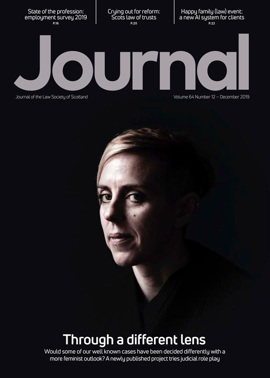PI in a hardening market

Up to early 2018 the PI market for law firms and other professional service firms in the UK had been pretty competitive for a number of years.
There had been an abundance of insurer capacity in the UK market, creating growth aspirations within insurers and driving premium rates downwards. Firms were readily able to obtain indemnity limits in the millions, with stable or reducing premiums and enhanced policy covers. In the insurance world, this type of market is known as a “soft market”. Even high risk firms or firms with a poor claims record were usually able to obtain cover in such a marketplace.
Fast forward to 2019.
Today, the number of insurers and capacity available in the PI market is much more limited. Across a number of sectors, PI premiums have increased considerably. Significant coverage restrictions are often imposed. In some cases, insurers are declining to offer terms altogether.
In other words, the market is now the “hardest” it has been for many years.
What has happened?
Professional indemnity is a long-tail liability insurance, meaning it can often take years before claim or circumstance notifications crystallise into losses. As such, insurers have to wait a long time to understand fully whether they have had a profitable underwriting year or not.
It is clear, with hindsight, that an increase in both frequency and severity of claims was beginning to impact insurers. But the major catalyst for the change in market conditions which we are now experiencing was the 2018 Lloyd’s of London strategic review, where the published results painted quite a grim picture of the UK professional indemnity marketplace.
The review highlighted significant losses within Lloyd’s, with losses reporting in excess of £500 million and numerous known claims yet to crystallise.
Lloyd’s took dramatic steps, forcing those syndicates operating within its framework to make significant changes to their business plans with the hope of returning this class to profitability.
The attention caused by the Lloyd’s review, and the stringent remedial action called for, seemed to create a greater focus on underwriting performance across the insurance market. It is likely that insurers outside of Lloyd’s were experiencing similar results and so most were looking to review their portfolio in greater detail. This included reviewing their risk exposures, which naturally led to a change in appetite for business from certain insurers as well as seeing some insurers withdraw from the market entirely or from specific sectors.
Implications for solicitors’ top-up cover
In Scotland, at renewal in 2018 we saw some small signs of rate increases in the top-up market, but this was not significant. However, firms who received a top-up quote this year will have seen that their top-up premiums were considerably higher than last year (in some cases by as much as 300%). The most significant increases were for cover immediately in excess of the Master Policy £2 million limit, and for limits up to £8 million over the £2 million. Insurers perceived the potential for claims over £2 million to be greater than in the past and were looking to charge more for these exposures. During the renewal period, practitioners seeking top-up cover will also have noticed that insurers were drilling down much more into the details of the firm’s risk profile and their operational activities. In addition to the Master Policy proposal form, insurers were looking at the areas of work and the contract and transaction values in much greater detail. Additional questionnaires and firm-specific questions were being requested from the majority of firms.
Top-up premiums have historically been very affordable, making the decision to take cover an easy one. The increased cost of these layers has forced firms to consider carefully their requirement for this extra cover. Some firms have not renewed their cover and others have significantly reduce their limit of indemnity. Unfortunately, we do not anticipate a change in this pricing approach for some time.
Implications for the Master Policy
The Master Policy premiums have been shielded from the impacts of the hardening market this year.
Ahead of Master Policy renewal in 2017, Lockton negotiated a three-year premium deal with the insurers which saw the global premium (the total of all premiums paid by firms in private practice) reduce year on year, subject to certain claims performance hurdles and economic triggers which had to be met.
We are pleased to say that the hurdles and triggers were met and that the premium has come down from £17.25 million in 2017 to £16.55 million in 2018, and down again to £16 million in 2019.
When this deal was agreed, the PI market was still soft – there was plenty of capacity available and underwriters, on the whole, had not initiated any corrective measures on their portfolio.
With the deal now at an end, we know that market conditions are very different. Underwriters are significantly more risk averse and through losses on their portfolios have had to adjust their rating to a level where they believe they can drive a realistic prospect of profit for their business.
The underwriting approach for a “portfolio” such as the Master Policy is slightly different to open market risks or top-up policies. Underwriters for the Master Policy are not drilling down into the details around each individual firm. Instead they are interested in the makeup and claims performance of the profession as a whole. This type of “portfolio” underwriting also means that underwriters take a view of claims over a longer period of time (usually 10+ years), to ensure that they can account for peaks and troughs in the claims experience and can produce what they see as a sustainable premium rate.
A positive feature of the Master Policy for insurers is that they are able to understand the exposures they will face by writing, because the Master Policy covers all firms in Scotland – there is not the risk of adverse selection which exists when underwriting in the open market. It is of course a major benefit of the Master Policy that cover is guaranteed for every firm.
Another aspect which underwriters are always keen to understand is the profession’s attitude to risk and how it embraces risk management. They don’t receive firm-specific information and so want to gain a picture of the overall approach and activity in this area.
We have seen positive moves within risk management in recent years, and this is something which needs constant focus so that we can demonstrate to underwriters a culture of continuous improvement across the profession.
Starting a new round
Negotiations for the 2020 Master Policy will commence in December 2019, initially by way of discussions with the lead insurer RSA. There are other insurers who participate on the programme (the co-insurers), and many of them are Lloyd’s syndicates for whom there will be continued rate pressure on their portfolios.
Discussions will obviously extend to engagement with these syndicates too.
There will be positive factors in favour of the profession in these discussions, and of course there will be some challenges – we lay some of these out below.
Positives
The positive features which are in the profession’s favour are:
- Over 40 years of claims history and an improving claims picture in the last few years.
- Economic climate improved in recent years – there is a direct relationship between the frequency of legal profession claims and economic factors.
- We can detail the increased focus on risk management which the Law Society of Scotland has driven, and continues to drive, through initiatives such as compulsory risk management CPD and the Practice Improvement Programme.
- Insurers understand from the start the exposures and policy limits which they are carrying because of the fact that all firms will be covered.
Challenges
On the other hand, negotiations will not be without challenge:
- When underwriting a population of risks such as Scottish law firms, underwriters will look at the claims performance over a longer period so that they can spot any trends or factors which might influence claims within that group. This means that they have not forgotten the years where claims paid by insurers exceeded the total of the premium paid by the profession.
- Underwriters need to be continually convinced that the profession is alive to its professional risk and that it is taken seriously. They would look for evidence that the profession as a whole is on a continual path of improvement through ongoing engagement in risk management. It is critical that we can demonstrate this to insurers.
It is really too early to tell what the insurers will be able or willing to provide for Master Policy 2020 and beyond. However, Lockton will commence discussions very shortly and will keep the Society and the profession closely advised of progress as these discussions progress into the new year.






